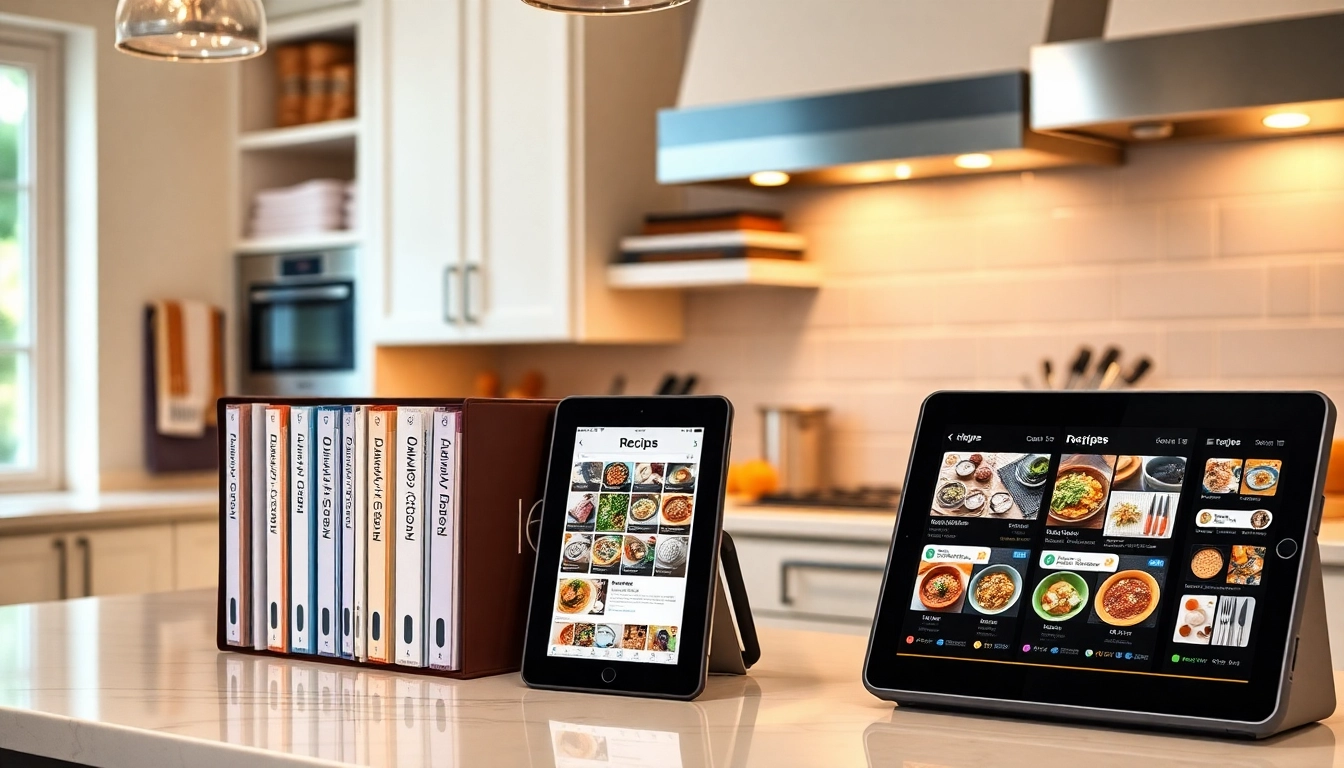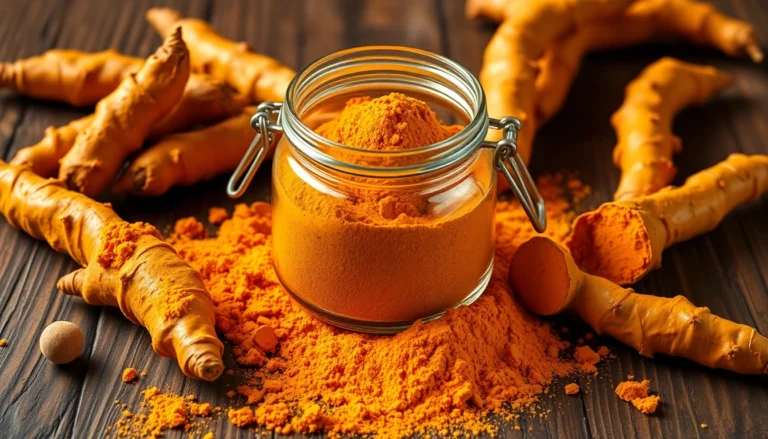Introduction to Recipe Organization: Why It Matters
In today’s fast-paced culinary world, a well-organized recipe collection is more than just a convenience — it’s a vital tool for efficient, enjoyable cooking. Whether you’re an aspiring home chef, an experienced culinary enthusiast, or someone juggling a busy family schedule, having quick access to your favorite recipes can save time, reduce stress, and inspire creativity. The process of organize recipe collection goes beyond simple filing; it involves creating a system that suits your lifestyle, cooking habits, and technological comfort level. Proper organization ensures that your recipes are not only accessible but also manageable, scalable, and adaptable to your evolving culinary needs.
Research indicates that many home cooks struggle with cluttered or disorganized recipes — whether they’re handwritten cards, printed pages, or digital files. According to online forums and expert articles, overcoming these challenges enhances cooking efficiency and makes meal planning more enjoyable. From heirloom family recipes preserved in binders to digital collections on apps and cloud storage, organizing your recipes enables you to leverage your collection fully, reducing duplication and making sure cherished dishes are never lost. This comprehensive guide explores the why, how, and best practices for mastering the art of organizing your recipe collection, tailor-made to fit modern digital tools and traditional methods alike.
Benefits of a Well-Organized Recipe Collection
Enhanced Accessibility and Efficiency
A structured recipe collection ensures that your favorite dishes are within easy reach, whether you need a quick dinner idea or a complex baking project. When recipes are well-organized, you spend less time searching and more time cooking, allowing you to focus on perfecting techniques or experimenting with new flavors.
Preservation of Family Heirlooms and Special Recipes
Many home cooks hold onto family heirlooms, treasured recipes, or those time-tested dishes. Proper organization, whether through digitization or systematic categorization, preserves these valuable culinary traditions, protecting them from physical wear or accidental loss.
Streamlined Meal Planning and Grocery Shopping
An organized recipe system simplifies meal planning, enabling you to quickly select dishes that complement each other or meet dietary preferences. Integrated shopping lists linked to recipes save time and reduce the mental load when grocery shopping, making cooking less stressful.
Increased Inspiration and Creativity
Common Challenges in Managing Recipes
Physical Clutter and Disorganization
Traditional recipe storage methods like index card boxes, handwritten binders, or loose printed pages can become chaotic over time. Recipes get lost, torn, or misplaced, leading to frustration and inefficiency.
Digital Overload and Fragmentation
With the advent of online recipe sites, Pinterest boards, and digital files, many home cooks face scattered collections. Multiple apps, cloud services, and device formats can create confusion, duplication, and difficulty in maintaining an overview.
Lack of a Consistent System
Without a standardized approach, recipes may be stored haphazardly—by date, by dish name, or randomly—resulting in difficulty finding what you need precisely when you need it.
Keeping Up with Updates and Revisions
As recipes evolve—altered for dietary needs or improved techniques—maintaining up-to-date versions can be tricky. Failure to update recipes leads to confusion and inconsistent cooking results.
Setting Your Goals for Recipe Organization
Before implementing any system, clarify your objectives. Do you want quick access for everyday cooking? Or are you more interested in preserving heirloom recipes? Your goals influence your choice of tools, methods, and categorization systems.
- Ease of Access: Prioritize systems that allow you to find recipes swiftly—such as categorization by cuisine or meal type.
- Durability and Preservation: Consider methods that protect recipes, like digital backups or protected binders.
- Flexibility and Scalability: Choose systems that can grow with your collection and adapt to new types or formats.
- Sharing and Collaborating: Decide if you want to share recipes with family or friends, influencing your choice of digital tools.
Establishing clear goals ensures your chosen system remains functional and satisfying over the long term, minimizing frustration and maximizing culinary inspiration.
Digital vs. Physical Recipe Storage: Which Works Best?
Digital Tools and Apps for Organizing Recipes
Digital platforms have revolutionized recipe management, offering convenience, searchability, and integration with other tools. Popular options include dedicated recipe apps like Recipe Keeper, Paprika, or digital folders on cloud services like Google Drive and Evernote.
These tools often support importing recipes from websites, scanning handwritten notes, or manual entry. Features like tagging, categorization, and sharing enhance organization and collaboration. For example, Recipe Keeper allows users to synchronize recipes across devices, making the collection accessible anywhere.
Traditional Methods: Binders, Index Cards, and Notebooks
Physical methods remain popular for those who enjoy tangible, tactile interaction or want a nostalgic touch. Well-organized binders with clear categories, tab dividers, and page protectors help keep recipes neat and durable. Index cards can be sorted alphabetically, by cuisine, or by meal type, with handwritten notes adding personal touches.
Some cooks prefer combining physical systems with digital backups, ensuring that old recipes are preserved and easily retrieved. Physical systems are particularly beneficial when internet access is limited or for those who value the aesthetic appeal of handwritten or printed recipes displayed in a kitchen space.
Integrating Digital and Physical Systems Seamlessly
Many experts advocate a hybrid approach that leverages the strengths of both methods. For instance, digital tools can be used to catalog and search recipes, while physical binders serve as a quick-access, functional display. Digitizing handwritten recipes via scanning apps or photographing index cards enhances security and searchability.
Achieving seamless integration involves establishing clear workflows—like maintaining a digital master collection and updating physical binders periodically, or scanning new recipes upon collection. Synchronization between these systems ensures consistency and avoids duplication or outdated versions.
Step-by-Step Strategies to Organize Recipes by Category
Creating Relevant and Clear Categories
The foundation of effective recipe organization lies in establishing categories that reflect your cooking style and needs. Common categories include cuisine type, main ingredient, meal occasion, dietary restrictions, or difficulty level. For example, grouping recipes under “Vegetarian,” “Quick Weeknight Dinners,” or “Desserts” allows for targeted browsing.
When creating categories, prioritize clarity and avoid overly narrow or broad labels. Use simple, descriptive names that are intuitive, and consider subcategories for more detailed organization. For instance, under “Breads,” you might include “Yeast Breads,” “Quick Breads,” and “Gluten-Free Breads.”
Using Tags, Color-Coding, and Indexes
Enhance categorization through tagging systems—both digital and physical. Tags can include dietary preferences (“Vegan”), cooking techniques (“Grilled”), or seasonality (“Summer”). Color-coding index cards or digital labels adds visual cues, speeding up retrieval.
Indexes—either alphabetical or thematic—serve as roadmaps to your collection. Digital apps often allow custom indexes or catalogs, while physical binders can include printed or handwritten tabs and an index page for quick reference.
Maintaining and Updating Your Recipe System
Regular review is essential for longevity. Schedule periodic purges of outdated or unused recipes, and update existing entries with improvements or modifications. Digital systems make this process more straightforward through search functions and editing tools. Physical systems benefit from periodic reorganization and note additions.
Tracking your usage and preferences can help refine your categories and streamline your collection, making your recipe archive more relevant and efficient over time.
Best Practices for Digital Recipe Management
Selecting the Right App or Software
The choice of digital platform depends on your needs: Do you want a simple digital notebook or a comprehensive recipe manager? Popular options include Paprika, Evernote, Google Drive, or specialized apps like Recipe Keeper. When choosing, consider features such as cross-device synchronization, import/export capabilities, tagging, search functions, and whether the platform supports multimedia (images, videos).
Prioritize user-friendly interfaces and options for cloud backup to prevent data loss. Read reviews, try free versions, and select a system that aligns with your technical comfort level and organizational goals.
Tips for Importing and Digitizing Old Recipes
Importing handwritten or printed recipes can be achieved through scanning apps such as Adobe Scan, Google Lens, or Evernote Scannable. These tools convert physical pages into digital files that can be stored, edited, and searched.
When digitizing, ensure high-quality scans, organize files systematically, and add descriptive tags or categories. For handwritten recipes, consider retyping or formatting into your digital system for clarity and ease of use. Embedding photos of handwritten notes preserves authenticity while enhancing searchability.
Sharing and Collaborating on Your Recipe Collection
Digital tools facilitate sharing via email, cloud links, or collaborative platforms. If cooking with family or friends, using shared folders or specific recipe-sharing apps can promote collaboration. This approach enables everyone to add, update, or comment on recipes, fostering a communal culinary experience.
Establish collaboration protocols to maintain organization—like naming conventions and update schedules—to prevent chaos and ensure everyone accesses the latest versions.
Maintaining Your Organized Recipe Collection for Long-Term Success
Regular Review and Cleanup Routines
Consistent maintenance is key to keeping your collection functional and clutter-free. Set a schedule—monthly or quarterly—to review your recipes, delete duplicates, discard outdated dishes, and incorporate new favorites.
In digital systems, utilize search and tagging features to identify recipes that haven’t been accessed in a while. Physically, reorganize binders, re-label tabs, and refresh decorative elements to keep your collection inviting and practical.
Adapting Your System as Your Cooking Style Evolves
Flexibility is essential. Your initial organizational system might need tweaking as your culinary interests expand or change. For example, if you discover a new dietary focus like gluten-free or keto, incorporate new categories or tags accordingly.
Likewise, technological advancements or new favorite apps may prompt migration to updated systems. Embrace change, but do so gradually, ensuring data integrity and ease of use during transitions.
Using Metrics to Track and Improve Accessibility
Monitoring how often certain recipes are accessed can provide insights into your preferences. Digital systems often allow tracking of popular or frequently used recipes, guiding which ones should be more prominently displayed or reorganized.
Similarly, if certain categories are rarely used, consider consolidating or eliminating them. Long-term, these metrics help refine your organizational strategy to better suit your culinary habits.








